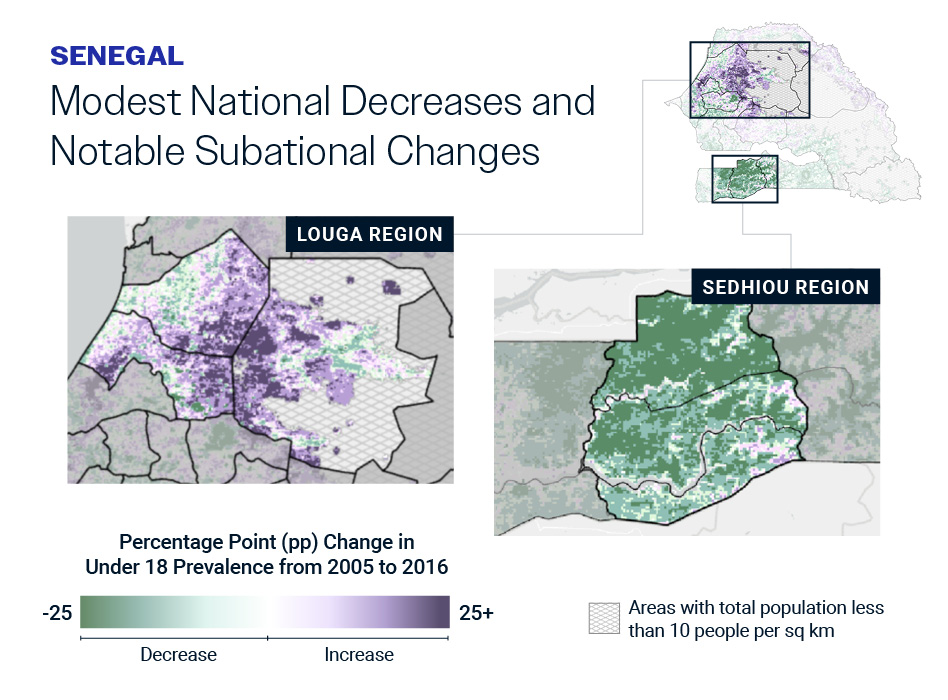Why Sub-National Data Will be Key to Ending Child Marriage by 2030

There is a widespread appreciation that child marriage looks different from one community to another, but there is highly limited data that consistently describe those localized differences.
The Global Partnership to End Child Marriage stressed this challenge during a high-level gathering in September/October 2019. The participants – which include the WHO, UN Population Fund, UNICEF, Girls Not Brides, Population Council, World Bank, and others – called for “better understanding of the prevalence, trends, determinants, correlates and characteristics of child marriage at subnational levels.” In their view, this is a major knowledge gap that is holding back the community’s efforts to end this scourge.
Fraym has responded to this call with support from the Bill & Melinda Gates Foundation. Working as part of the foundation’s Child Marriage Learning Partners Consortium, Fraym: (1) estimated and mapped child marriage prevalence down to the 1km2 level across time and space; (2) analyzed community contexts; and (3) explored whether and how several risk factors might be associated with higher child marriage prevalence. These studies covered Bangladesh, Ethiopia, India, Kenya, Malawi, Nigeria, and Senegal. This project was an extraordinary opportunity to combine Fraym’s cutting-edge data and AI/ML models with learning partners’ decades of research, policy, and programmatic experience, including Girls Not Brides, Iris Group, Population Council, UC-San Diego, Unchained at Last, and UNICEF.

Put differently, the national lens looked like almost nothing was happening. But, the sub-national lens showed that prevalence was declining in many communities (sometimes dramatically so) while simultaneously increasing in other areas.
Senegal and Kenya clearly fall into this first group. For example, the under-18 child marriage prevalence rate in Senegal went from 39 percent in 2005 to 35 percent in 2016. An extremely modest decrease over an eleven-year time period. Yet, if we zoom into a region like Sedhiou in the southwest, we observe a decrease of 24 percentage points.
Yet another region to the northwest, Louga, witnessed a 5-percentage point increase. Some communities in this region witnessed much more notable increases. These results clearly highlight this sub-national divergence that was masked with national-level figures.
Looking across the focus countries, Fraym identified two broad categorical trends:

Bangladesh, Ethiopia, and Malawi fall squarely into the second group. All three countries exhibited notable decreases in under-18 prevalence at the national level. The largest of which was Ethiopia, with an 11-percentage point decrease over the examined period. The most pronounced declines occurred in the Ethiopian regions of Amhara and Tigray in the northwest, where many communities experienced double-digit decreases. Although, this type of transformational progress did not reach every single area of the country. There were still a few pockets of lagging trends. For instance, Afar, immediately to the east, saw almost no changes.
One group of countries had stubbornly little change in national prevalence rates, yet very pronounced shifts at the sub-national level over time.
The second group of countries had both significant national declines as well as widespread declines across most (but definitely not all) communities.
M
Women Wed as Children globally
%
National Decrease in Senegal
%
National Decrease in Ethiopia
The ability to identify trends around gender-based practices at the local-level offers a new and actionable lens. Just as The Global Partnership to End Child Marriage had expected and hoped. Through the use of cutting-edge geospatial data technologies, we can help gender equality advocates better map where prevalence is highest down to hyper-local levels, understand how trends may be shifting over time, and then explore contributing community level factors.
This brief post explores just one of countless takeaways from Fraym’s work and that of the six other consortium partners. We look forward to sharing further learning, insights, and materials in the near future. If this can be helpful to your organization’s efforts, then please let us know and we will work to get our analysis in your hands. Our ultimate goal is to support the advocates, policymakers, and other changemakers in the trenches that are working every day to help bring a future of freedom and greater opportunities for girls and young women.